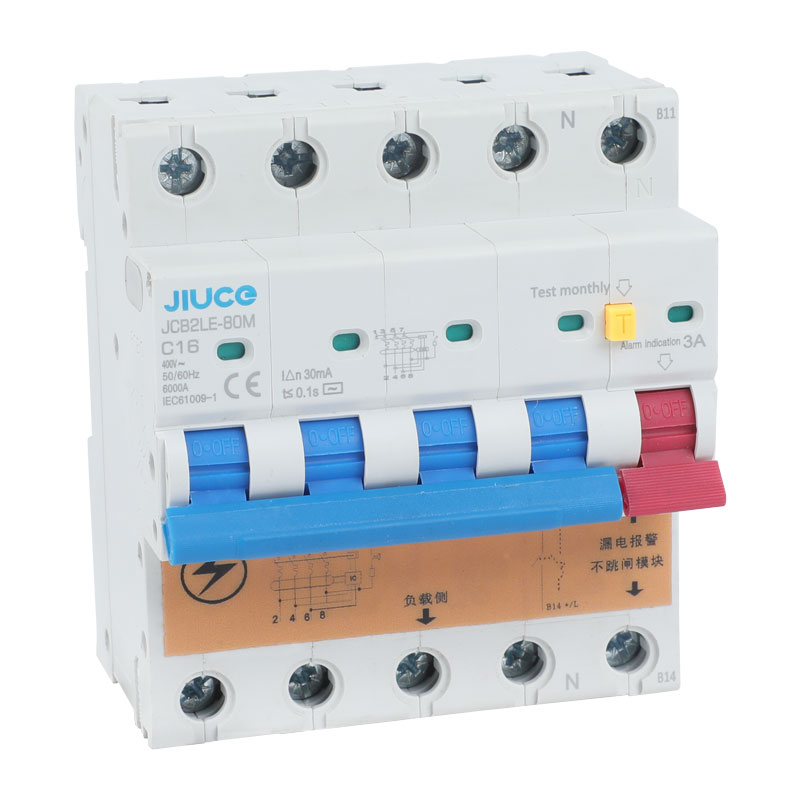What is an RCBO and how does it work?
RCBO is the abbreviation of “overcurrent residual current circuit breaker” and is an important electrical safety device that combines the functions of an MCB (miniature circuit breaker) and an RCD (residual current device). It provides protection against two types of electrical faults: overcurrent and residual current (also called leakage current).
To understand how RCBO works, let’s first quickly review these two types of failures.
Overcurrent occurs when too much current flows in a circuit, which can cause overheating and possibly even a fire. This can happen for a variety of reasons, such as a short circuit, circuit overload, or electrical fault. MCBs are designed to detect and interrupt these overcurrent faults by tripping the circuit immediately when the current exceeds a predetermined limit.
On the other hand, residual current or leakage occurs when a circuit is accidentally interrupted due to poor wiring or a DIY accident. For example, you might accidentally drill through a cable while installing a picture hook or cut it with a lawnmower. In this case, electrical current may leak into the surrounding environment, potentially causing electric shock or fire. RCDs, also known as GFCIs (Ground Fault Circuit Interrupters) in some countries, are designed to quickly detect even minute leakage currents and trip the circuit within milliseconds to prevent any harm.
Now, let’s take a closer look at how RCBO combines the capabilities of MCB and RCD. RCBO, like MCB, is installed in the switchboard or consumer unit. It has a built-in RCD module that continuously monitors the current flowing through the circuit.
When an overcurrent fault occurs, the RCBO’s MCB component detects the excessive current and trips the circuit, thus interrupting the power supply and preventing any danger related to overload or short circuit. At the same time, the built-in RCD module monitors the current balance between the live and neutral wires.
If any residual current is detected (indicating a leakage fault), the RCBO’s RCD element immediately trips the circuit, thus disconnecting the power supply. This rapid response ensures that electric shock is avoided and potential fires are prevented, reducing the risk of wiring errors or accidental cable damage.
It’s worth noting that RCBO provides individual circuit protection, meaning it protects specific circuits in a building that are independent of each other, such as lighting circuits or outlets. This modular protection enables targeted fault detection and isolation, minimizing the impact on other circuits when a fault occurs.
To sum up, RCBO (overcurrent residual current circuit breaker) is an important electrical safety device that integrates the functions of MCB and RCD. It has over-current fault and residual current protection functions to ensure personal safety and prevent fire hazards. RCBOs play a vital role in maintaining electrical safety in homes, commercial buildings and industrial environments by quickly tripping circuits when any fault is detected.
- ← Previous:What Makes MCCB & MCB Similar?
- Residual Current Device (RCD):Next →

 Zhejiang Jiuce Intelligent electric co., ltd.
Zhejiang Jiuce Intelligent electric co., ltd.










